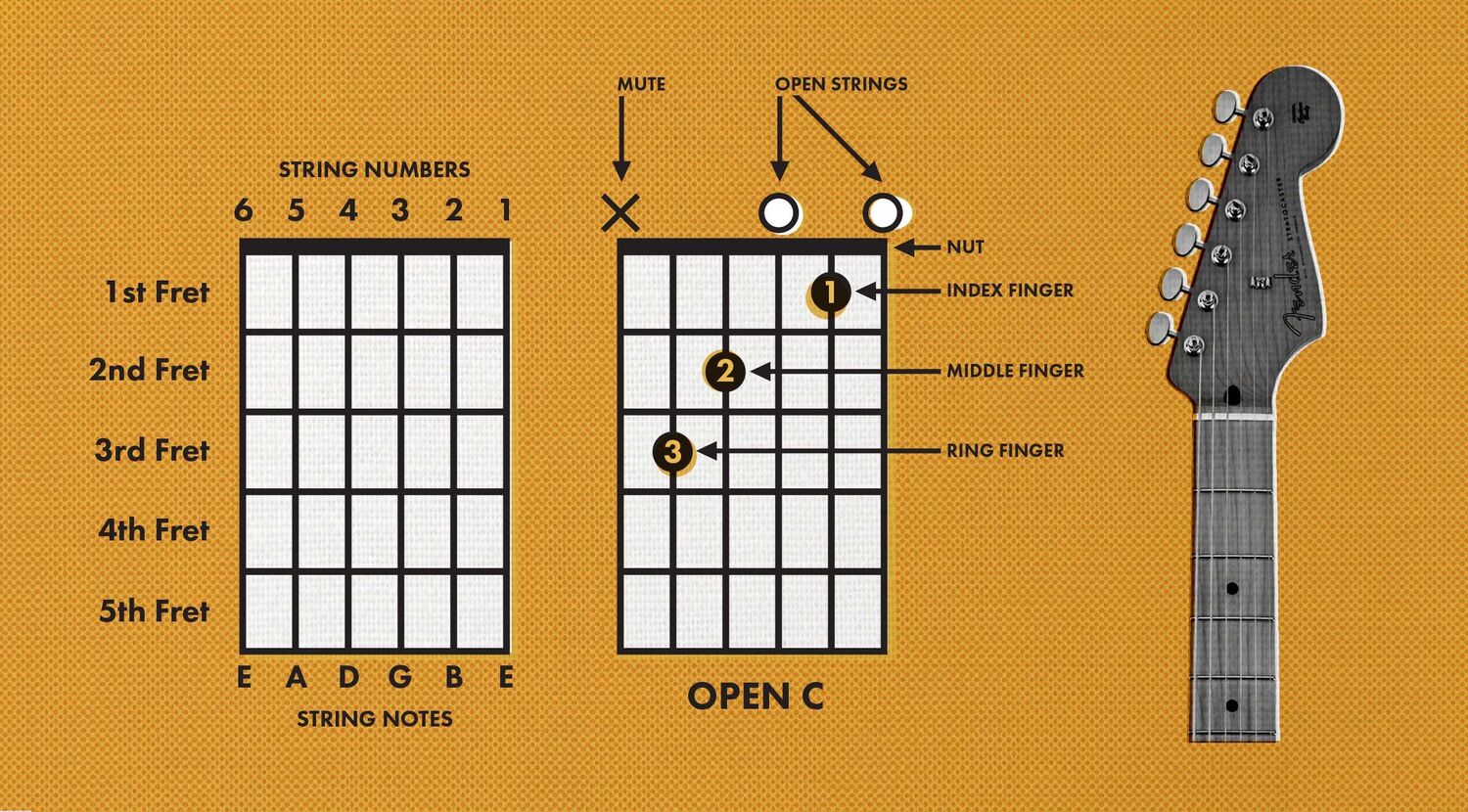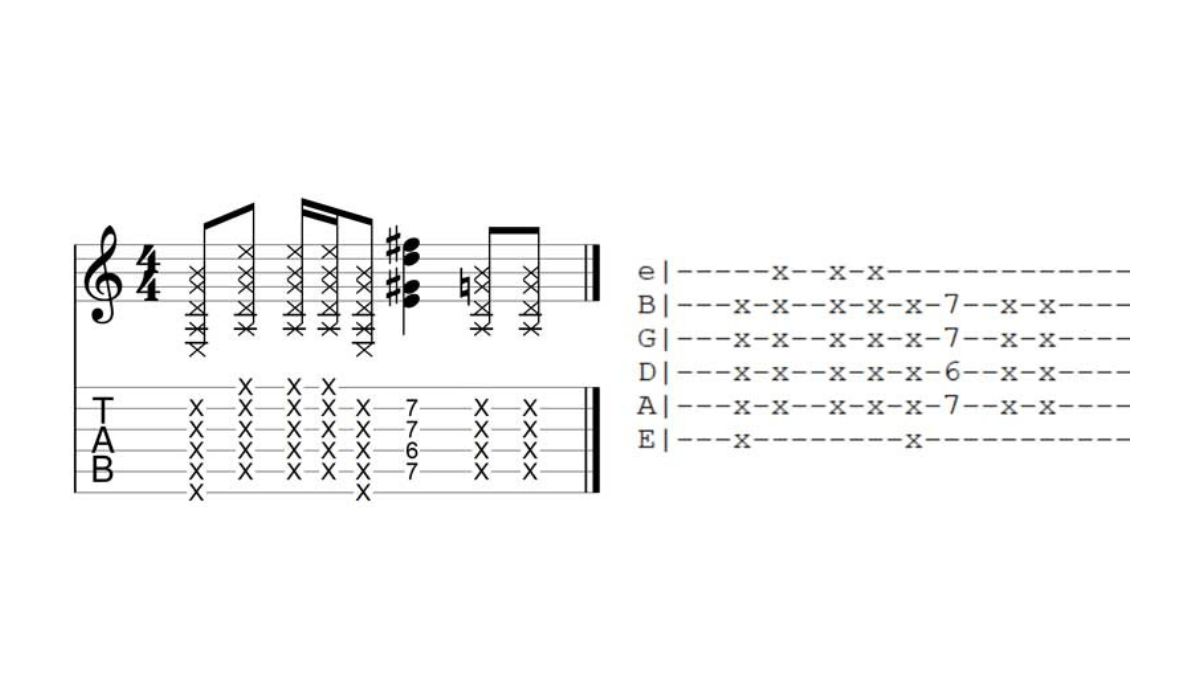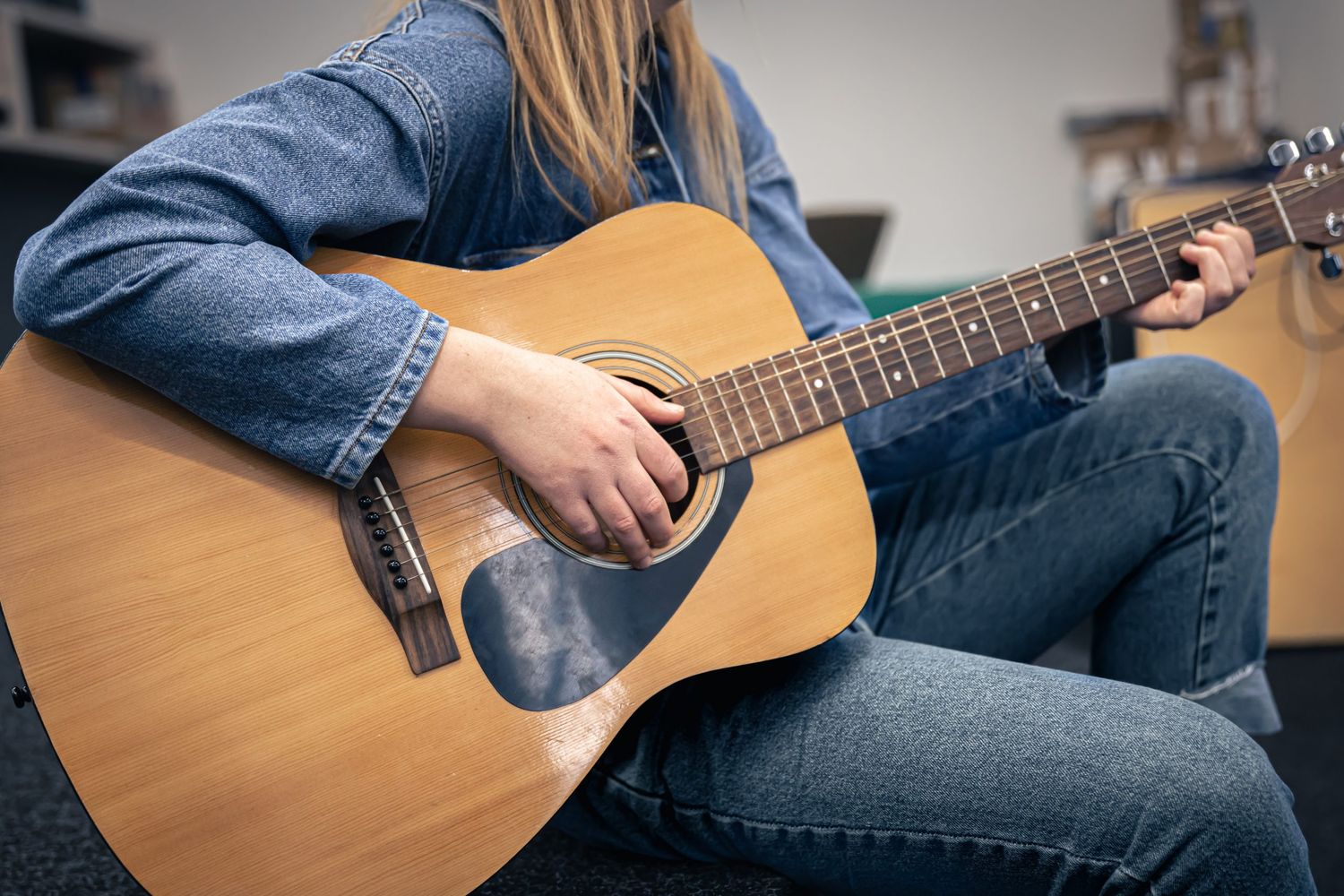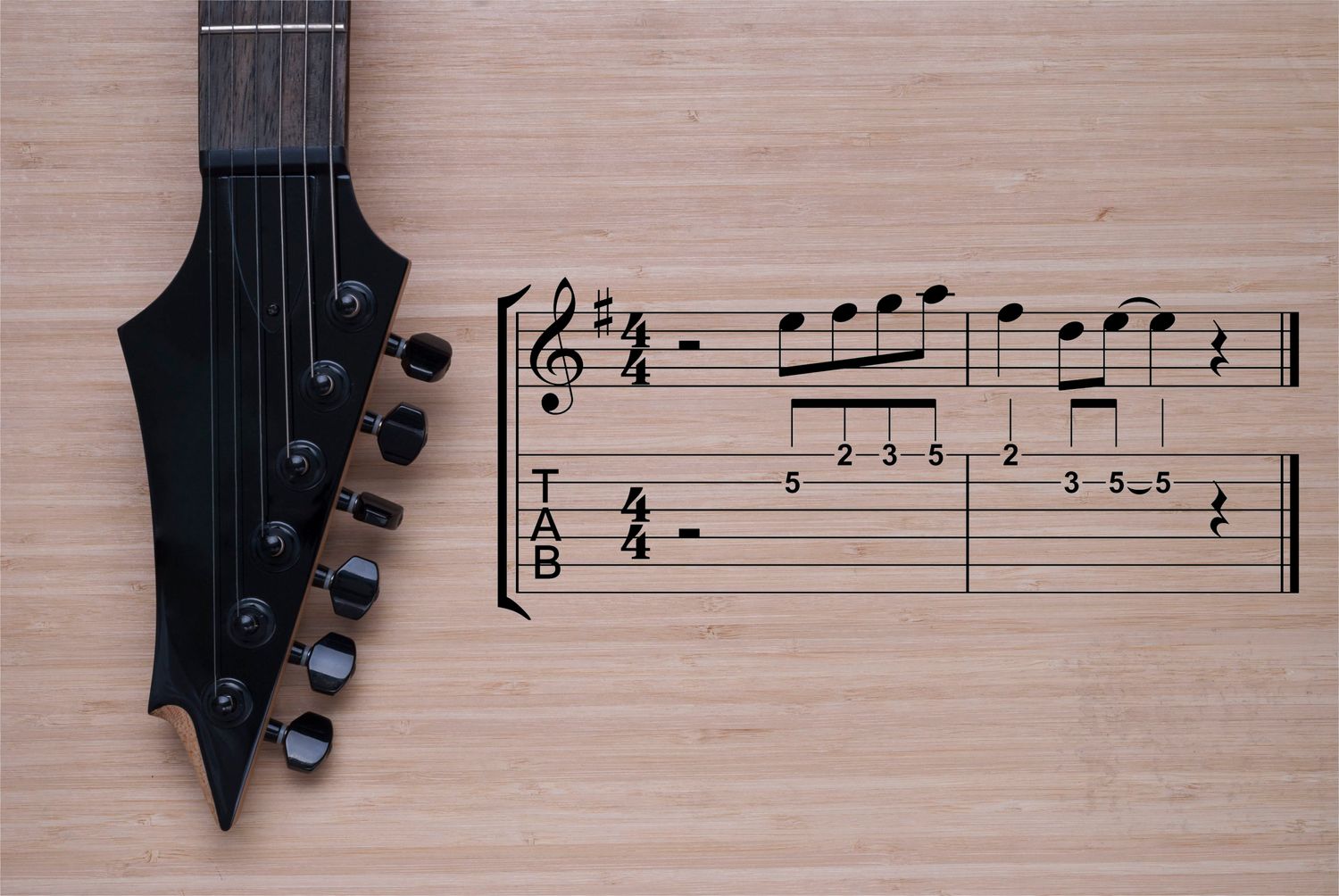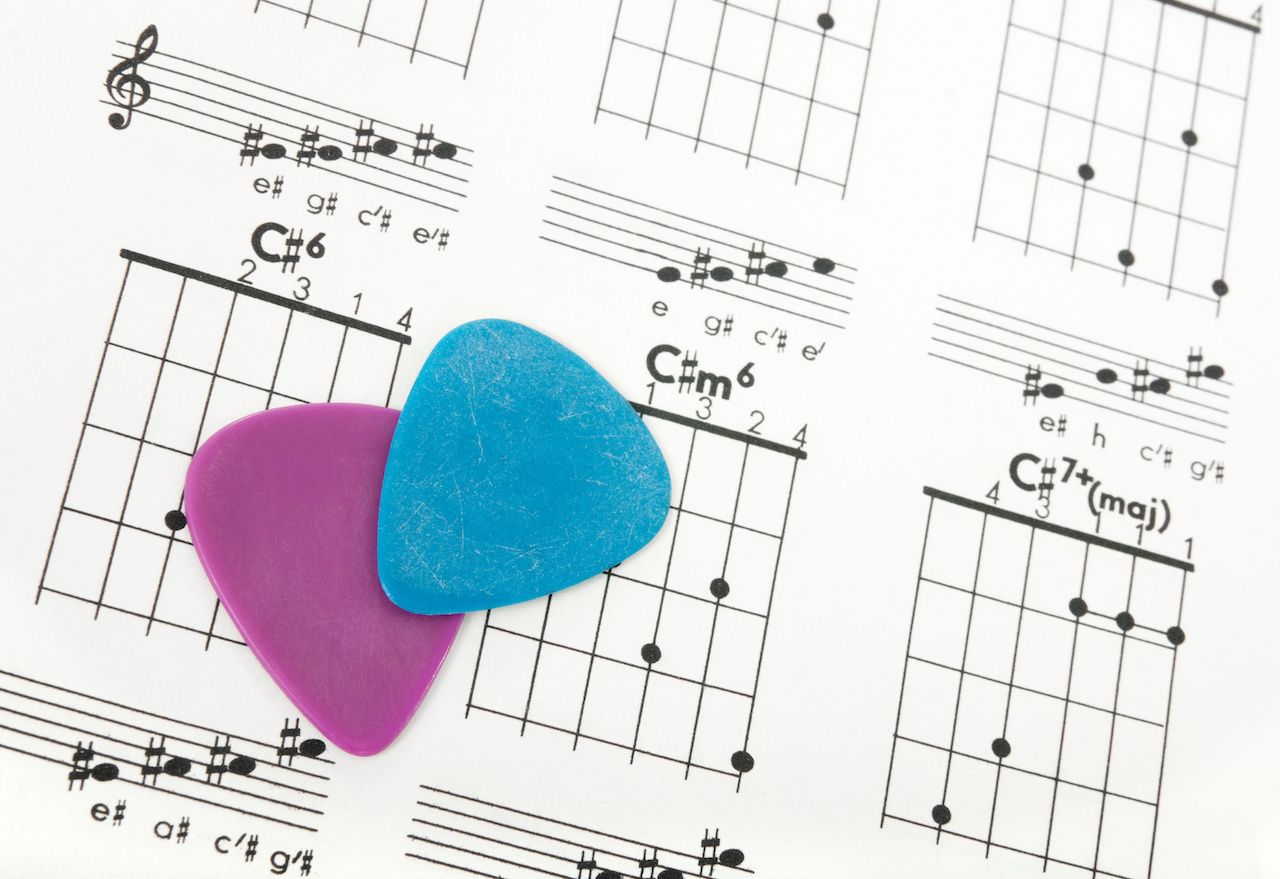Home>Instruments>Guitar>How To Read Guitar Tabs


Guitar
How To Read Guitar Tabs
Modified: February 15, 2024
Learn how to read guitar tabs and master the art of playing the guitar with our comprehensive guide. Discover essential tips and techniques for reading and interpreting guitar tabs.
(Many of the links in this article redirect to a specific reviewed product. Your purchase of these products through affiliate links helps to generate commission for AudioLover.com, at no extra cost. Learn more)
Table of Contents
Introduction
Learning to read guitar tabs is an essential skill for any aspiring guitarist. Whether you’re a beginner picking up the instrument for the first time or a seasoned player looking to expand your repertoire, understanding how to read guitar tabs opens up a world of musical possibilities. While traditional sheet music provides a detailed musical notation, guitar tabs offer a more straightforward and intuitive way to learn and play songs on the guitar.
Unlike standard notation, which requires a comprehensive understanding of music theory, guitar tabs use a simplified system of lines and numbers to represent the strings and frets on the instrument. This accessibility makes guitar tabs an invaluable resource for guitarists of all levels, allowing them to quickly learn new songs, riffs, and solos without the need for extensive theoretical knowledge.
In this comprehensive guide, we will delve into the fundamentals of reading guitar tabs, explore various techniques for interpreting tablature, and provide valuable tips to enhance your tab-reading skills. By the end of this article, you’ll have the knowledge and confidence to approach any guitar tab with ease, unlocking a wealth of musical possibilities and accelerating your guitar-playing journey.
Understanding Guitar Tabs
Before diving into the intricacies of reading guitar tabs, it’s essential to grasp the fundamental elements that comprise this popular form of musical notation. At first glance, a guitar tab may appear cryptic to the uninitiated, but with a bit of guidance, its structure becomes remarkably straightforward.
Guitar tabs consist of six horizontal lines, each representing a string on the guitar. The line at the bottom corresponds to the low E string, while the top line represents the high E string. Numerals placed on these lines indicate which fret to press down on the corresponding string. For instance, a “0” signifies an open string, while a “3” denotes pressing down the third fret. This numerical representation allows guitarists to visualize where to place their fingers on the fretboard, facilitating the replication of melodies and chords with relative ease.
Additionally, symbols such as “h” for hammer-ons, “p” for pull-offs, and “/” for slides provide further insight into the articulation and techniques required to accurately perform a piece of music. Understanding these symbols is crucial for interpreting the nuances and embellishments present in guitar tabs, ultimately enhancing the authenticity and expressiveness of your playing.
Furthermore, guitar tabs often include standard notation alongside the tablature, offering a comprehensive view of the music. This integration allows guitarists with varying levels of musical literacy to benefit from the wealth of information provided, fostering a deeper understanding of the composition and its execution.
By familiarizing yourself with the basic components of guitar tabs, you’ll gain a solid foundation for navigating the vast array of musical possibilities they present. With this knowledge in hand, you’re ready to embark on a journey through the captivating world of guitar tablature.
Reading Guitar Tabs
Once you’ve grasped the fundamental structure of guitar tabs, the next step is to develop the ability to read and interpret them effectively. Reading guitar tabs involves visualizing the fretboard and understanding how the numbers and symbols correspond to the strings and frets on the guitar.
When reading a guitar tab, start by identifying the tuning indicated at the beginning of the tablature. Standard tuning is denoted as EADGBE, representing the six strings from low to high. Alternative tunings, such as drop D or open G, are also commonly specified to accommodate different musical styles and sonic possibilities.
As you progress through the tab, pay close attention to the numbers aligned vertically, indicating which fret to press down on each string. Simultaneously plucking or strumming the strings in accordance with the tablature produces the desired notes, enabling you to replicate the melody, chords, or riffs accurately.
It’s important to note that guitar tabs provide a linear representation of music, with time flowing from left to right. As you play through the tab, the sequence of numbers and symbols guides you through the composition, allowing you to recreate the music with precision and authenticity.
Moreover, understanding the duration of notes and the rhythm of the piece is crucial for capturing its musical essence. While guitar tabs primarily focus on pitch and fingering, rhythmic notation, such as standard musical notation or rhythmic slashes, may be included to convey the timing and duration of the notes. This integration equips guitarists with the necessary tools to internalize the rhythm and phrasing of the music, elevating their performance to a higher level of musicality.
By honing your ability to read guitar tabs fluently, you’ll unlock a vast repertoire of songs, solos, and riffs, enabling you to explore diverse musical genres and styles with confidence and proficiency. With patience and practice, reading guitar tabs will become second nature, empowering you to express your musical creativity and passion through the enchanting language of the guitar.
Techniques for Reading Guitar Tabs
Mastering the art of reading guitar tabs involves employing various techniques to enhance your comprehension and execution of the music laid out before you. By incorporating these strategies into your practice routine, you can elevate your tab-reading proficiency and unlock a world of musical possibilities.
- Visual Mapping: When confronted with a new guitar tab, take a moment to visually map out the fretboard and identify the position of each note or chord. This mental exercise fosters a deeper understanding of the music and facilitates smoother transitions between frets and strings during performance.
- Segmented Learning: Breaking down complex passages into smaller segments allows for focused practice and gradual mastery. By isolating specific sections of the tab and repeating them until they become second nature, you can effectively tackle challenging musical phrases and elevate your overall proficiency.
- Listening Comprehension: While reading guitar tabs, actively listen to the corresponding song to internalize the phrasing, dynamics, and nuances present in the music. This auditory reinforcement enhances your interpretation of the tablature, enabling you to imbue your performance with authenticity and emotion.
- Contextual Analysis: Understanding the context of a song or musical passage can significantly aid in deciphering guitar tabs. Consider the genre, playing style, and historical significance of the music to glean insights that enhance your interpretation and bring depth to your performance.
- Collaborative Learning: Engaging in collaborative learning environments, such as online forums or local jam sessions, provides valuable opportunities to exchange insights, seek guidance, and learn from fellow guitar enthusiasts. Embracing a community of like-minded musicians can enrich your tab-reading journey and inspire continuous growth.
By integrating these techniques into your practice regimen, you’ll develop a comprehensive approach to reading guitar tabs, fostering a deeper connection with the music and honing your skills as a guitarist. Embrace each tab as a gateway to musical exploration and artistic expression, and let your passion for the instrument propel you toward mastery.
Tips for Reading Guitar Tabs
As you embark on your journey of reading guitar tabs, incorporating the following tips into your practice routine can significantly enhance your tab-reading proficiency and overall musical experience:
- Start with Familiar Songs: Begin by exploring guitar tabs for songs you are familiar with. This familiarity will provide a valuable reference point and make the learning process more engaging and rewarding.
- Utilize Tab Software: Consider using tablature software or apps that offer playback features, allowing you to hear the music as you follow along with the tab. This auditory reinforcement can deepen your understanding and facilitate effective practice.
- Focus on Technique Symbols: Pay attention to technique symbols such as bends, slides, and vibrato, as they add expressive elements to the music. Understanding and executing these techniques accurately can significantly enhance your performance.
- Explore Diverse Genres: Venture into guitar tabs from various musical genres to broaden your repertoire and adapt to different playing styles. This exploration fosters versatility and enriches your musical perspective.
- Practice Sight-Reading: Engage in sight-reading exercises by attempting to play through guitar tabs without prior familiarity. This practice sharpens your ability to interpret tablature on the spot, a valuable skill for spontaneous musical collaborations.
- Seek Clarification: If you encounter ambiguous or challenging tablature, don’t hesitate to seek clarification from experienced guitarists or online communities. Embracing a spirit of curiosity and continuous learning fuels your growth as a musician.
- Embrace Patience and Persistence: Learning to read guitar tabs is a journey that requires patience and persistence. Embrace each challenge as an opportunity for growth, and celebrate your progress along the way.
By integrating these tips into your tab-reading endeavors, you’ll cultivate a holistic approach to interpreting guitar tabs, empowering you to delve into a diverse array of musical compositions with confidence and enthusiasm. Embrace the learning process, stay curious, and let the enchanting language of guitar tabs inspire your musical expression.
Conclusion
Congratulations on embarking on the enriching journey of learning to read guitar tabs. As you’ve discovered, guitar tablature offers a versatile and accessible means of interpreting music, allowing guitarists of all levels to explore and perform a vast repertoire of songs, riffs, and solos with relative ease. By delving into the fundamental elements of guitar tabs, mastering essential reading techniques, and embracing valuable tips, you’ve equipped yourself with the knowledge and skills to navigate the captivating world of tablature with confidence and proficiency.
Reading guitar tabs is not merely a technical endeavor; it’s an immersive experience that invites you to connect with the essence of the music and infuse it with your unique expression. As you hone your ability to interpret tablature, remember to approach each piece with curiosity, patience, and a spirit of exploration. Embrace the diverse musical genres and playing styles represented in guitar tabs, and allow them to expand your musical horizons and nurture your creativity as a guitarist.
Furthermore, the journey of reading guitar tabs is a continuous evolution, marked by moments of discovery, growth, and the joy of musical expression. Embrace the challenges and triumphs along the way, and remember that every note you play brings you closer to a deeper understanding of the instrument and the music you love.
As you integrate the techniques and tips outlined in this guide into your practice regimen, allow your passion for the guitar to be your guiding force. Let the enchanting language of guitar tabs inspire you, and may your musical journey be filled with moments of revelation, camaraderie, and the sheer delight of bringing music to life through your fingertips.
With dedication, perseverance, and an unwavering love for the guitar, you’ll continue to flourish as a proficient tab reader and a captivating musician. Embrace the boundless possibilities that guitar tabs offer, and let your passion for the instrument propel you toward new heights of musical excellence.

